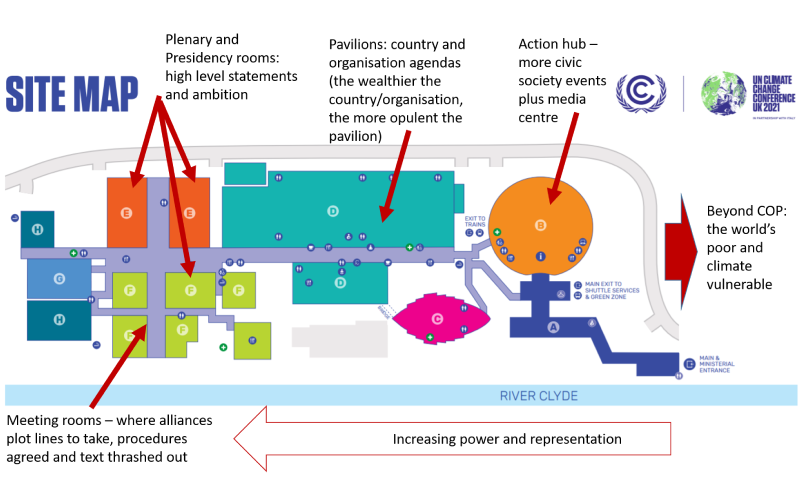You are here
- Home
- COP26 – 7 November
COP26 – 7 November

COP26 has been bringing together parties from across the world to accelerate action towards the goals of the Paris Agreement and the UN Framework Convention on Climate Change. The Open University has official observer status at COP26 and is learning from the conference to inform the university’s wider sustainability mission and inspire students and staff to take action. Here are some of the conference’s highlights, as told by our Open University observers.
COP26 Diary - 7 November: Dr Clive Mitchell, Associate Lecturer.
Entering week two, the contentious issues still to be agreed, are finance, Article 6 (international carbon markets and a framework for non-market-based approaches), transparency issues, common Nationally Determined Contributions (NDC) timeframes under the Paris Agreement, plus loss and damage, the global goal on adaptation, and response measures.
These are all ‘red line’ issues for both developed countries (mainly responsible for global carbon emissions) and developing countries (mainly vulnerable to the impacts of climate change). In practice there are several alliances and blocs, with countries often being members of several blocs at the same time, depending on issues and tactics.
In negotiations, as all social relations, power relations are rife. Here they can be seen to be laid bare in the very layout of the COP26 venue as I highlight in the featured image of this article.
Power and recognition of vested interests in a fossil fuel economy increases from right to left in the COP26 venue site map above. Constituencies seek to influence the level of ambition in the plenaries and presidential rooms. The negotiators in the meeting rooms seek to turn that ambition into some kind of reality, weaving a path through 194 states plus the EU, and their interests, across the dimensions of climate change and domestic politics.
What if the central area in the COP26 venue had been made the hub of the crucial decisions? And youth and Global South voices given equal access?
Currently, the contentious issues still to be agreed remain stuck in issues of distributive justice, procedural justice and recognition – especially for loss and damage, response measures and finance.
The UK overseas aid budget has been reduced from the 0.7% target agreed with the UN and a statutory duty under the International Development Act 2015, to 0.5% impacting many countries.
In 2009, Shoibal Chakravarty and colleagues, sought to unblock the country-by-country stalemate by revealing the carbon emissions for each and every person on the planet, throwing the spotlight for action on the one billion highest emitters.
Of course, the interests of these one billion are most strongly represented in the UN decision-making rooms at COP26.
Related articles
- Supporting climate action through digital education: new free BOC 26th February 2024
- Introducing a new free course - Climate Psychology: facing the climate crisis 8th February 2024
- Climate Change and machine learning - Climate Perspectives 8th February 2024
- Go Green: What is eco-anxiety? 8th February 2024
- Go Green: Fashion Fixing and Mending 8th February 2024